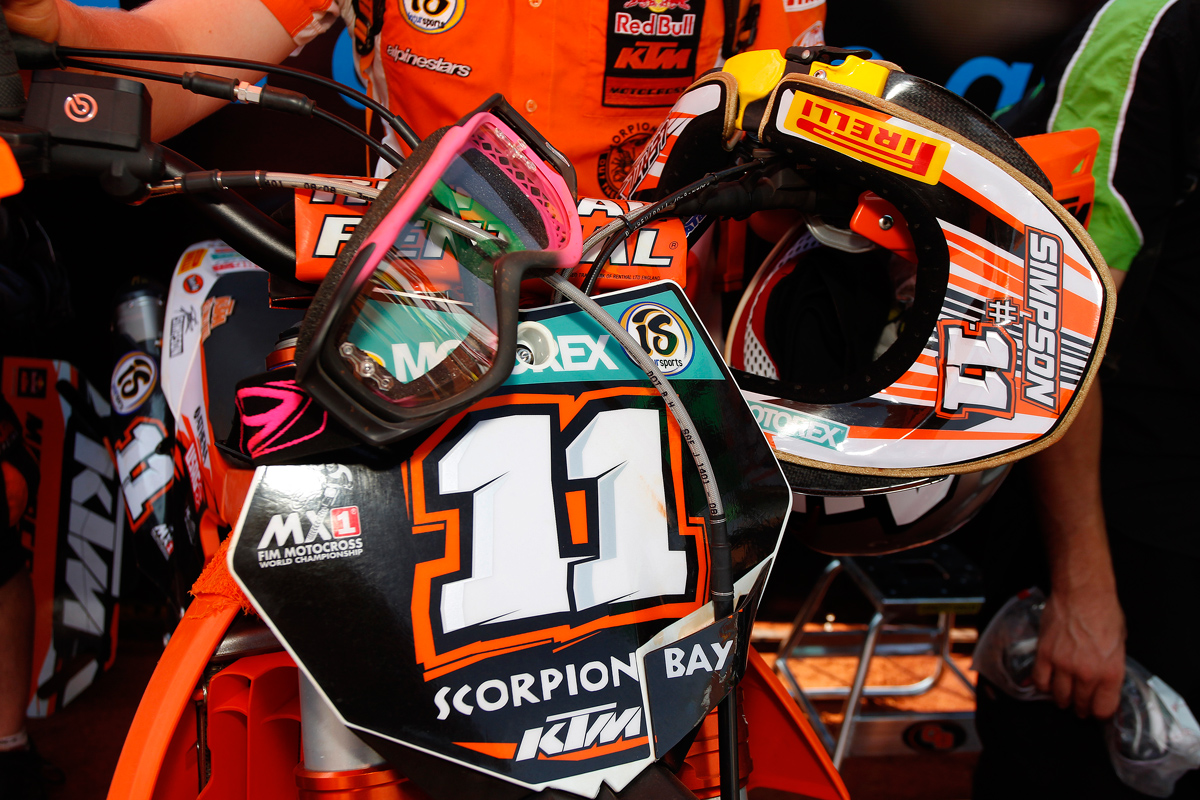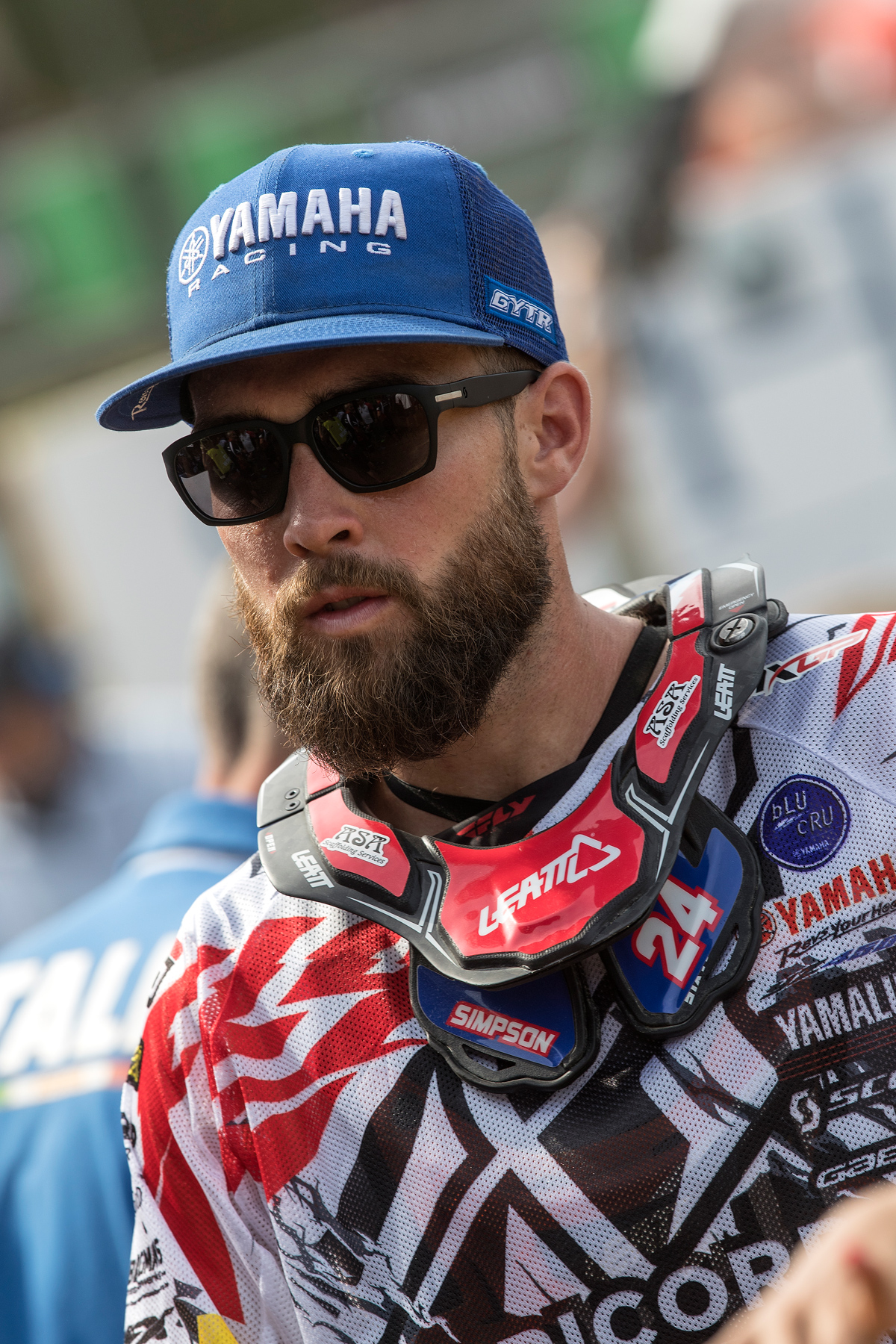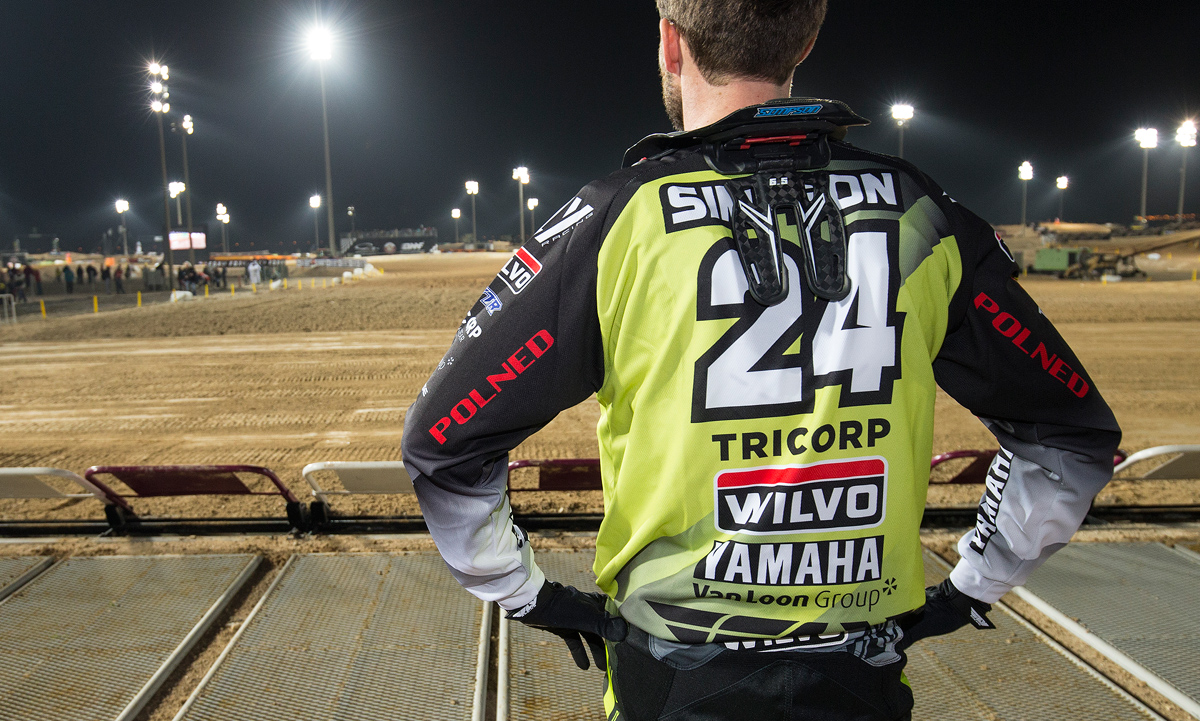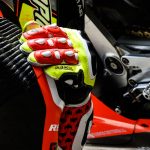Leatt’s GPX neck brace was already a bold piece of technology upon its launch in 2007 and used a rigid structure and Alternative Load Path concept to introduce a new form of protection to off-road motorcycling that has spread into bicycle competition and other sports.
The GPX was born with a desire to provide some benefits in motorcycle sports and immediately captured curiosity, attention, scepticism and general interest. Athletes and regular off-road riders embraced the ambition behind the brace and the millions of dollars of investment, research and hours put into the product by Dr Chris Leatt and his team in Cape Town.
One of the racers ‘sold’ on the idea of the GPX serving a role of reducing impact forces to the neck was Shaun Simpson, then an upcoming MX2 rider and two seasons away from finishing fourth in the world and gaining his first GP podium silverware. The Scot used the brace from the first version on the market right up until present day and has since become a Leatt athlete, also admonishing the South African’s commendable efforts with body armour and chest protection. Simpson used an Alpinestars neck brace from 2011-2013 so has sampled a different approach to the same principal but has largely seen the GPX morph into the slim, foldable, carbon-based form that distinguishes the 2017 build.

Apart from MX2 World Champion and AMA 250SX No.1 Marvin Musquin the former British Champion is best-placed to offer some insight as to how Leatt have evolved their wares and refined the GPX for the demands of motocrossers at the highest level.
“The thing with Leatt is that they actually came out with a really good product right from the beginning,” the 29 year old said. “In 2007 the first brace I had was plastic, so it wasn’t the lightest version, but I wouldn’t say it was drastically different with my current carbon brace: maybe 3-400 grams? My carbon model has a few bits of plastic and padding now for practicality and fitting and it is as light as it’s ever been.”
“Back in 2007 not many people had the brace and there were lots of people asking: ‘Is it worth it? Will it work? Will it bother me?’ It came with a lot of hype and was something new that people had to try. I started wearing one and instantly felt like I ‘connected’ with it. I fitted it properly – which is something that I think a lot of people struggle with because it does need to go correctly with your body armour and the components that rest on your back and chest actually have to be in place – and felt like it was doing a job. I see that some guys have it on top of their body armour and it sits too high. If it isn’t worn properly then that is when it can feel cumbersome.”

Weight loss was a natural progression with new materials and composites. The carbon GPX 6.5 now balances at 600g (1.3lbs) but there was another significant shift with the back strut moving from a single form to a split fork. “I think the move for two was based on people reacting to the singular piece laying on the spine; despite the fact that Leatt had made test after test to show that the strut broke after a certain amount and load of pressure. There are aspects of the brace that are made to break when you crash: they have a threshold and that is how it has been designed. Also the strut piece now has a hinge whereas the old one had a bolt that you had to take out to pack it, so it is much easier.”
“The general shape has changed a bit over time,” he adds. “There are little ‘wings’ on the back of the GPX now and I believe that is to do with the contact area with the helmet. The front pads that rest near the sternum are much more flexible these days. Overall the brace is much more minimal and with rounded edges. Could it be minimised even more? I don’t know but looking at the shape you can appreciate the engineering involved to fit the body and do a job. I used to cut pieces away that I felt were unnecessary and shave down the chest rests by three-four millimetres in the old days so it sat a bit lower. Adam Sterry and some of the other lads wear an L or XL but I prefer a S/M for the tighter fit and the compactness and the connection with the helmet.”

Alterations in the shape have been minor but noticeable. “There is potentially more airflow, and the cut-outs on the sides are even more pronounced for the haters that say the brace is responsible for collarbone breakages: you can actually see a physical gap between the brace and the bone now.”
The GPX now has a simplified locking system with the long-used buckle joint replaced by a low profile catch that requires simply meeting both ends of the brace together. “It used to be a buckle that you could fold back and also put your straps onto,” Simpson says. “There are still hooks for the straps if a rider wants to wear them and a good thing about any Leatt body protection is that they come with straps so you can fix the brace right into place. In previous years I never used to strap the brace, but now I do just because that system with the body armour works really well.”
The locking mechanism however is one of the very few aspects of which the conscientious Brit holds a few reservations. “If I had to be honest then the catch system is an area that could be worked on. It is really easy and simple at the moment but you have this feeling that you need to give it a couple of firm pulls to make sure it is really connected and that a small piece of dirt might to prevent a secure fix. The old system felt very secure to me because it was more ‘mechanical’; when it clicked in you felt ‘right, we’re ready to go’.”
Crucially Leatt’s neck protection has made two major strides in terms of practicality. Many riders wanted the benefits and assurance of the GPX or an equivalent model but fitting and also looking after the unit was an added chore. As a long-term user Simpson is well aware of the progress made in these aspects. “It is much easier to set-up the brace yourself. With the first models there was a lot of messing around with bolts and little shims and carbon inserts. Now you can just slide pieces back and forwards for the optimum fit. I can adjust any new brace purely for me in just fifteen seconds, before it might have taken fifteen minutes with a bag of bits and tools!”
For a professional racer on the bike as much as #24, being able to deal with the brace as easily as other parts of his kit was another advantage. Together with better storage potential – the back section of the brace folds up, instead of the whole brace needing to be dismantled into pieces as before – then there is even less reason not to install the GPX into the equipment bag.
“The main thing for me through time and the different editions – aside from comfort, fit and weight – is the level of maintenance,” Shaun concludes. “It now takes hardly any looking-after: you just jet-wash it, leave it to dry and it’s good to go again. In the early days there used to be white padding and sticker kits and it all looked very nice but you had to dismantle it and put the soft parts in the washing machine. There was a lot of Velcro and bits and pieces involved and it probably took as long to prep the brace as it did your helmet with all the foam and inserts. Now you can powerhose your boots in the wash bay and do the brace at the same time and it just becomes part of your programme. You can collapse it down now and I keep mine inside a helmet bag when I take it to the track.”
Strangely neck protection is still a divisive topic at the top tier of racing with those very much in favour of the ‘percentages’ and others who remain dubious. Plenty of scientific data and testimonies adhere to the positive role it can play and the ten-year period of discovery and progression with creations like the GPX illustrate how design thinking and problem-solving can march on.
Photos by Ray Archer (brace shot by Jordi Wheeler)








